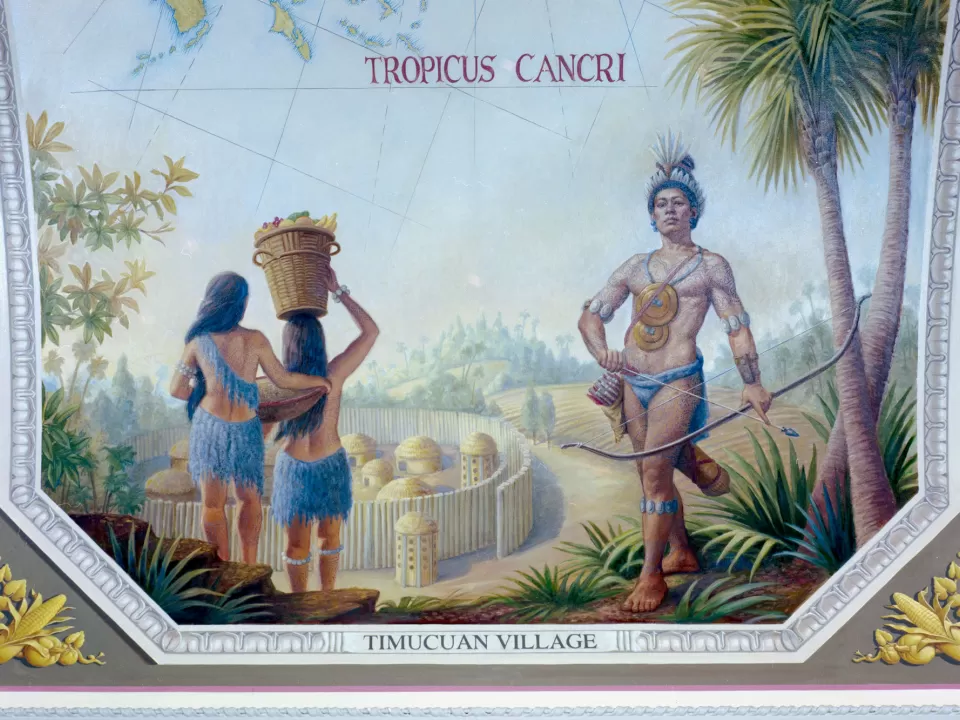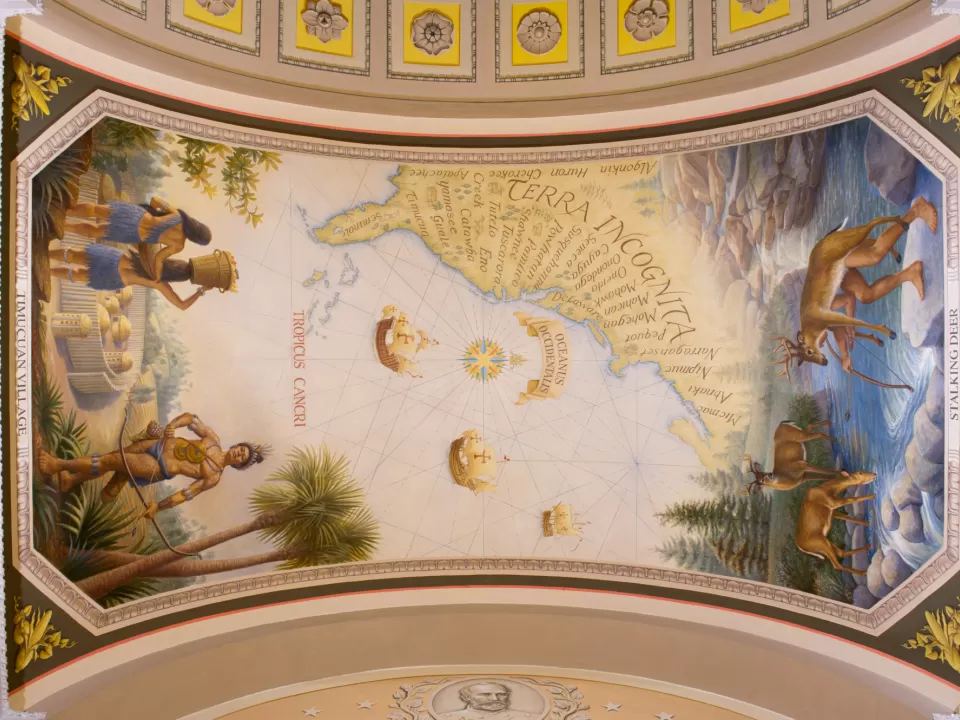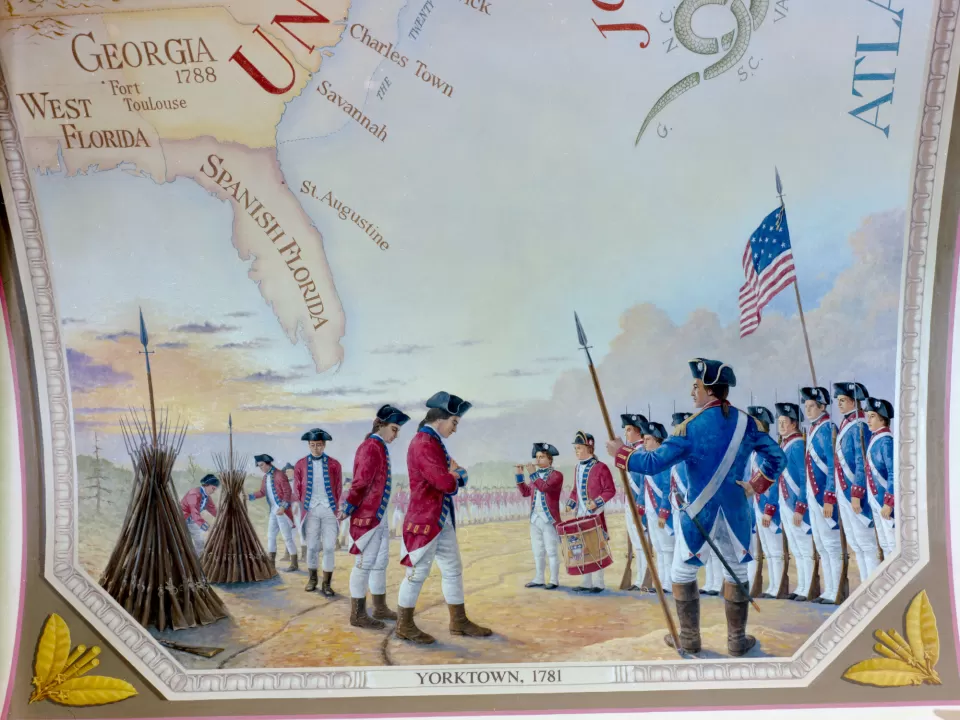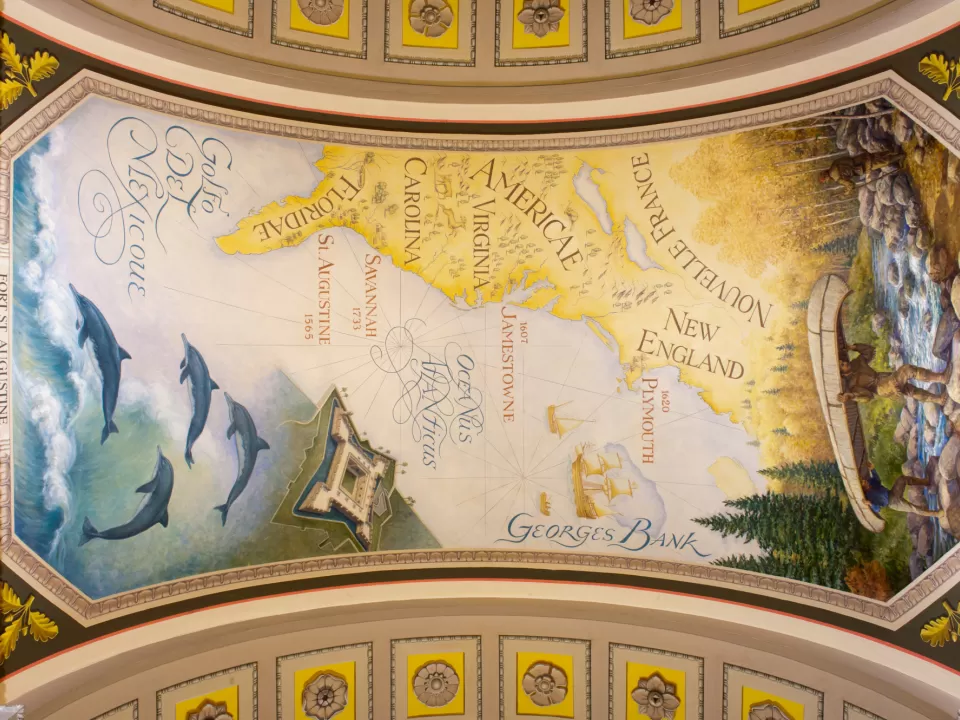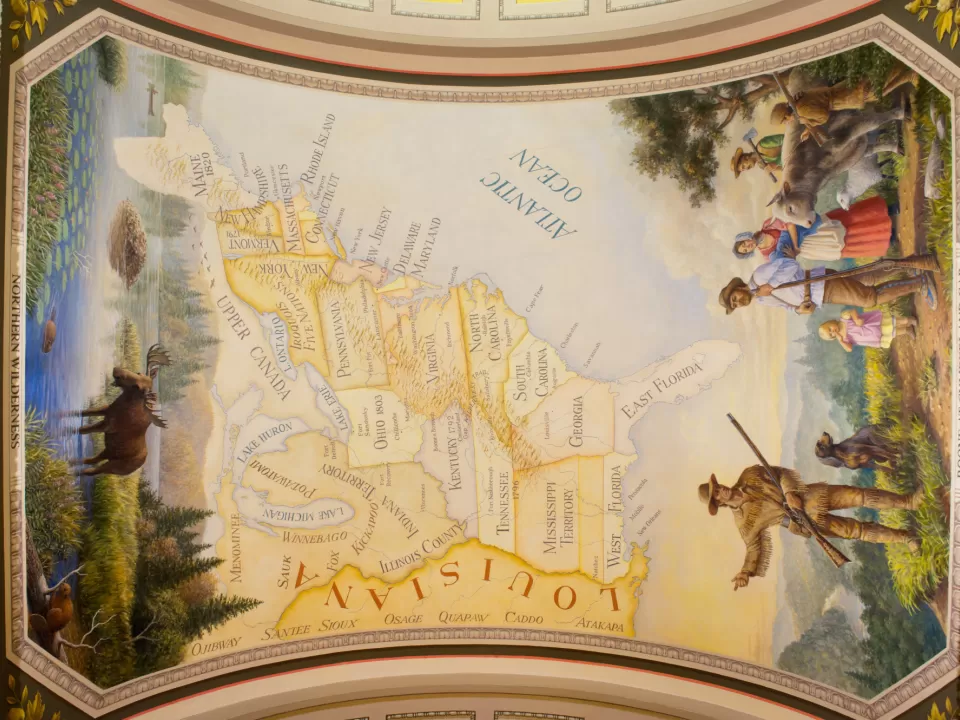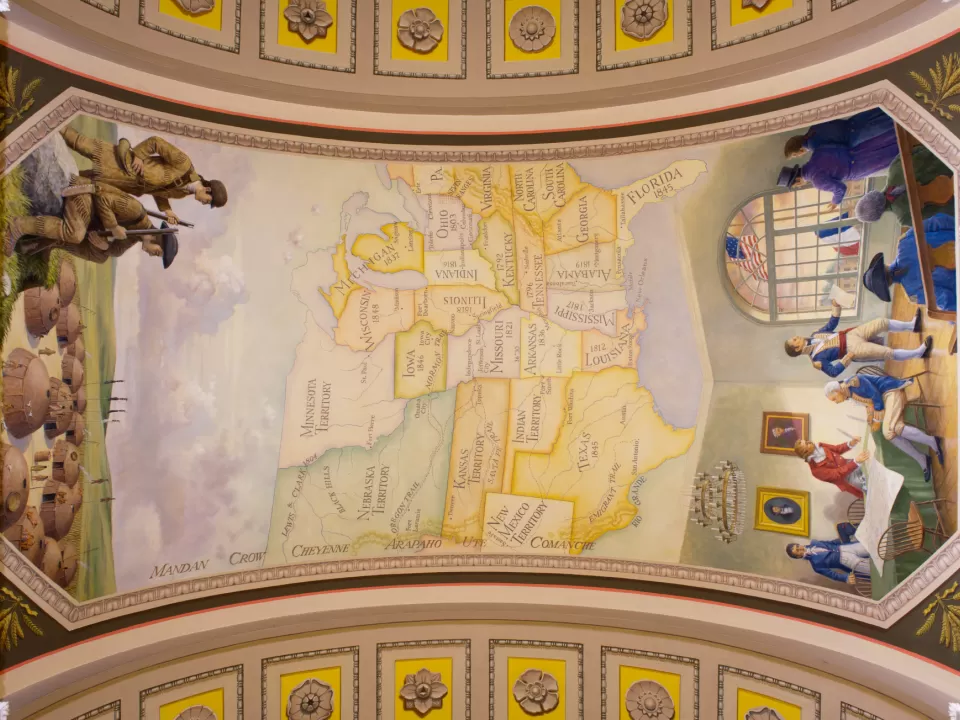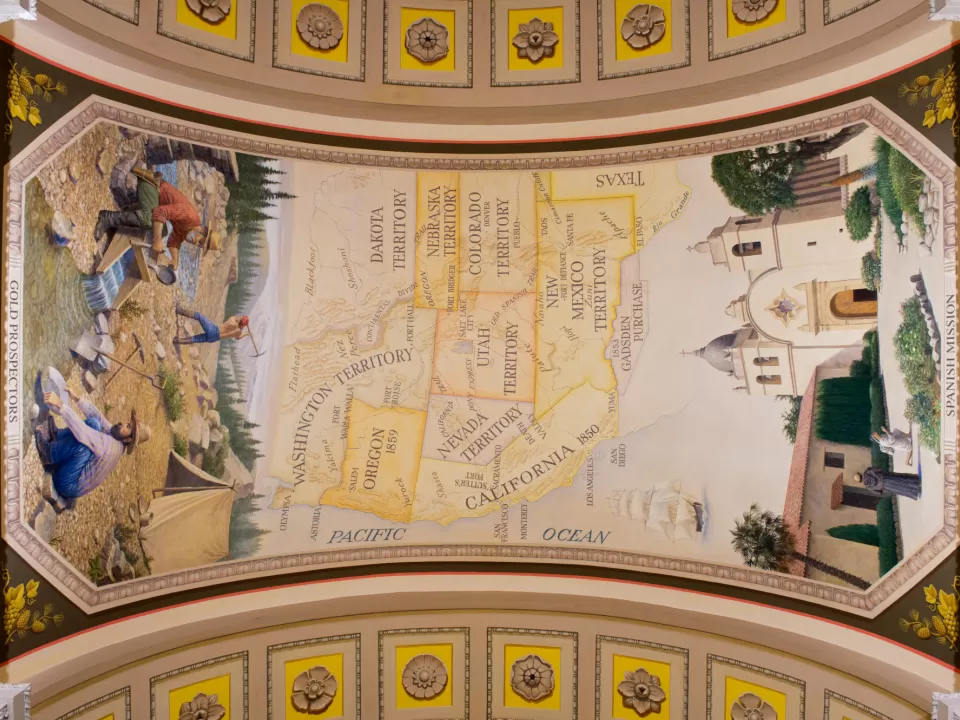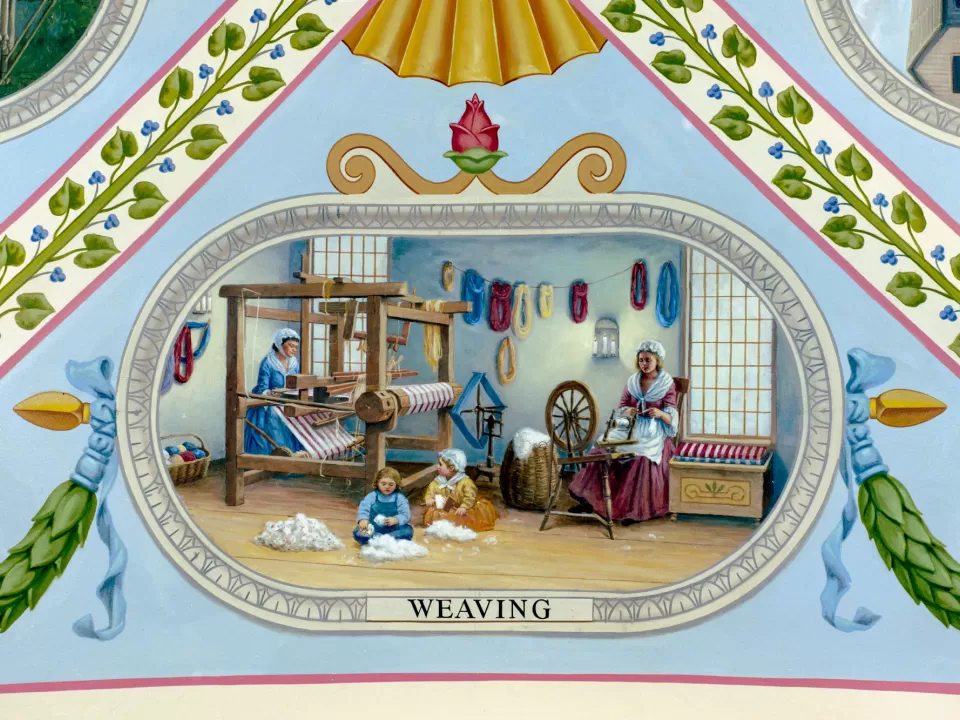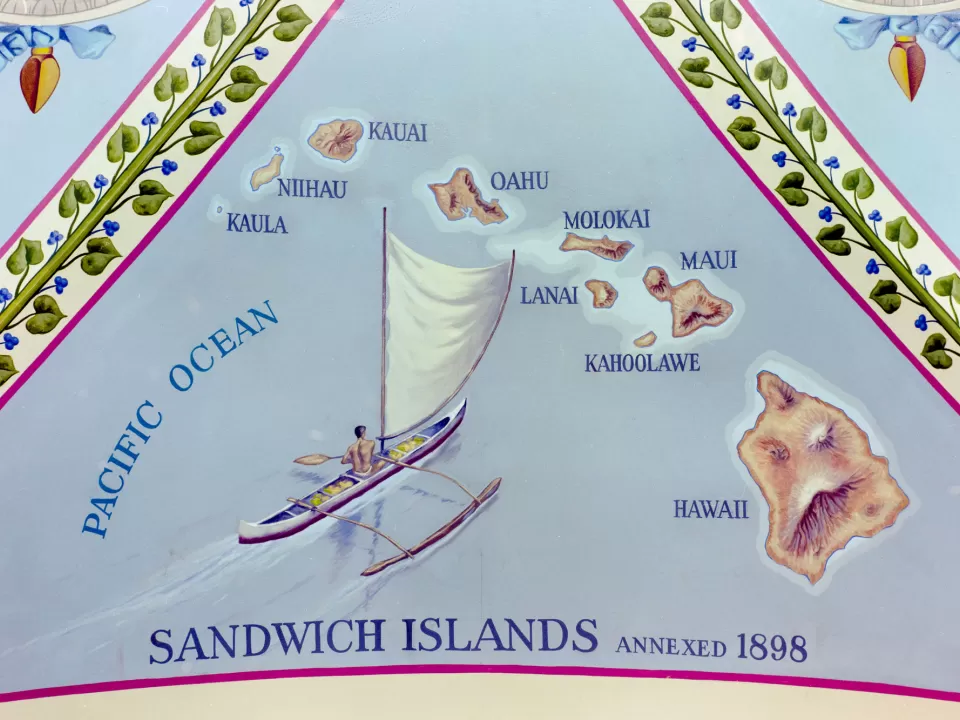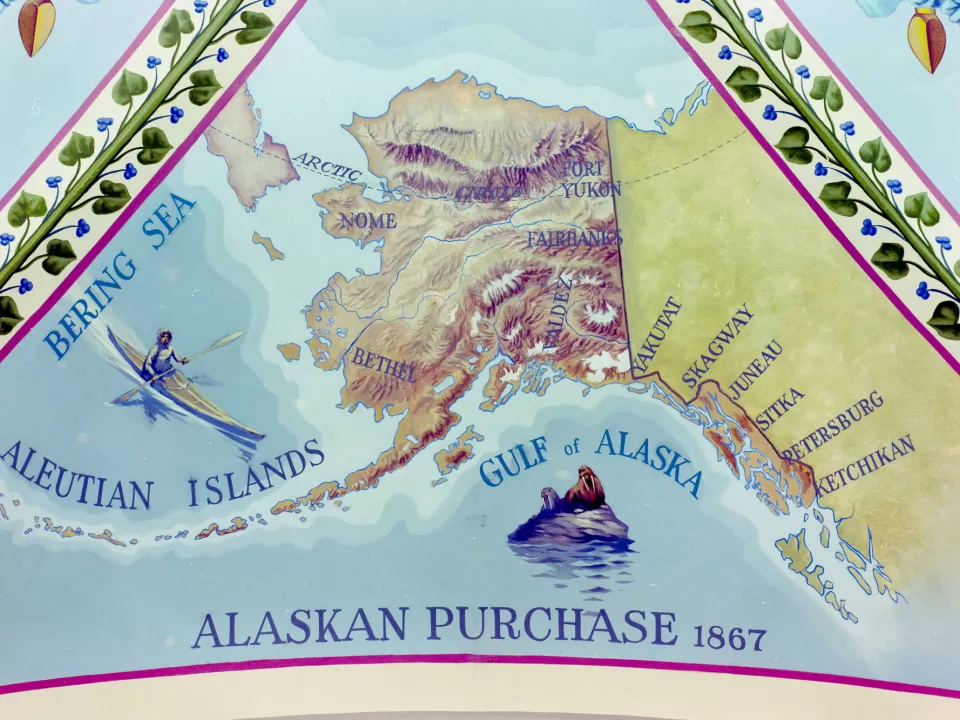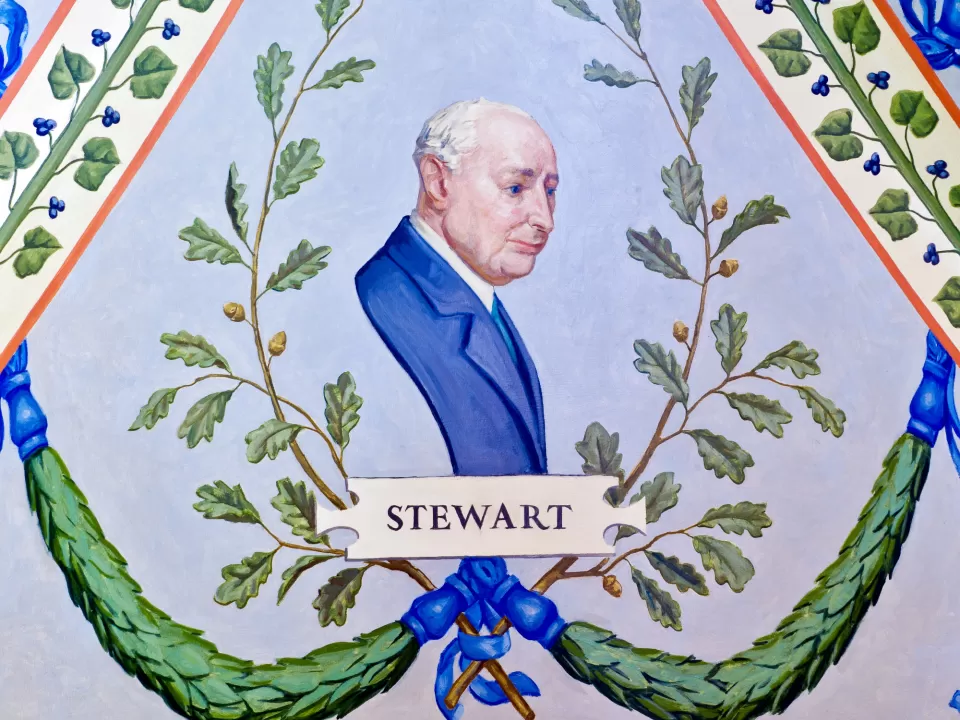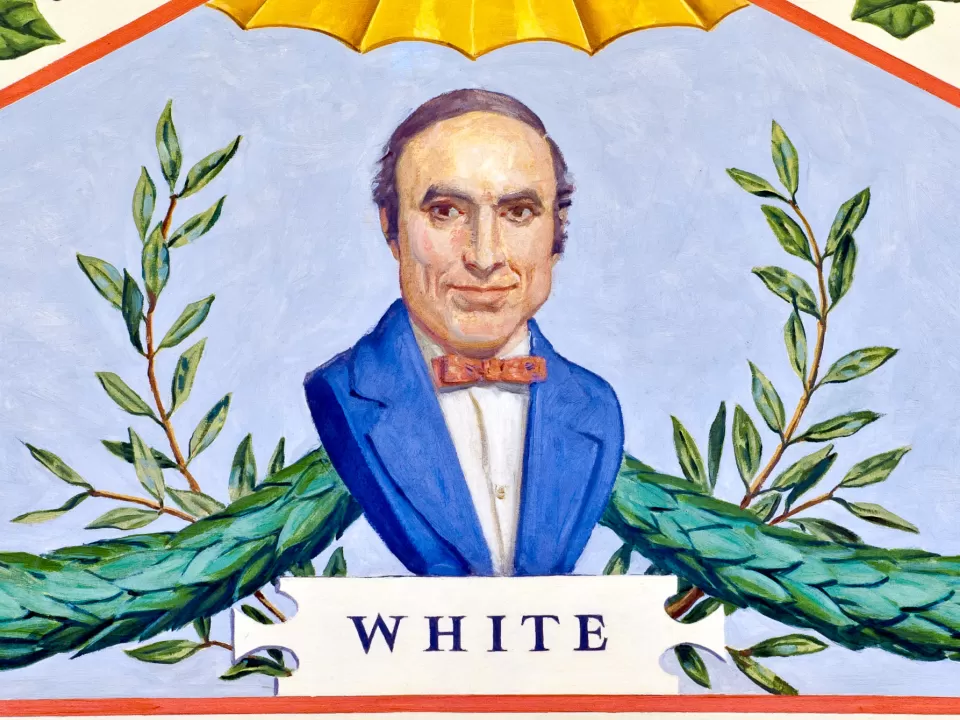Architect of the Capitol employees are responsible for the care and preservation of more than 300 works of art, architectural elements, landscape features and more.
Browse our pieces below or learn more about the artists, collections and subjects.
Filter Results
Displaying 25 - 36 of 120
Three Native Americans of northern Florida's Timucuan tribe are depicted near their village.
Yorktown, 1781
At the end of the Revolutionary War, the British are shown laying down their arms against a symbolic sunset.
The First Four Settlements in America
The map shows the first four settlements in America, from St. Augustine (1565) to Plymouth (1620).
From the Atlantic Ocean to the Mississippi River
The map shows the states and territories between the Atlantic Ocean and the Mississippi River.
Central North America
The map shows the central section of the continent to illustrate the effect of the Louisiana Purchase (1803), the Lewis and Clark expedition, and the opening of the West.
Weaving
The craft is shown as a family operation, with children carding the wool, a young woman spinning it, and an older woman operating a loom.
Sandwich Islands
A map shows the islands now called Hawaii, which were annexed in 1898; an island native carries fruit in an out-rigger canoe with a cloth sail.
Alaskan Purchase, 1867
On this map of the lands, an Eskimo hunts in a kayak; nearby seal and walrus represent the fur trade as well as the subsistence of the indigenous people.
J. George Stewart Portrait
The extension of the U.S. Capitol's East Front and construction of the Rayburn House Office Building were highlights of Architect of the Capitol J. George Stewart's 1954-1970 term of service.
George M. White Portrait
George M. White, who served as Architect of the Capitol from 1971 until 1995, constructed the Library of Congress Madison building, the Hart Senate Office Building, and the Thurgood Marshall Federal Judiciary Building.
